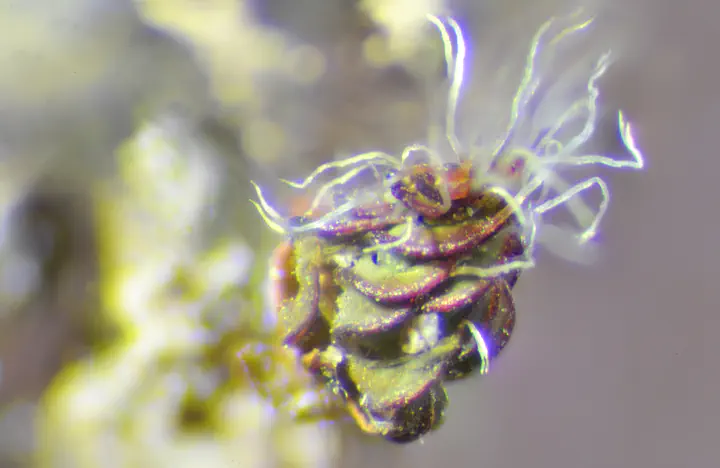Transcriptomic effects of acute ultraviolet radiation exposure on two 𝙎𝙮𝙣𝙩𝙧𝙞𝙘𝙝𝙞𝙖 mosses
 A dry Syntrichia ruralis shoot.
A dry Syntrichia ruralis shoot.Abstract
Ultraviolet radiation (UVR) is a major environmental stressor for terrestrial plants. Here we investigated genetic responses to acute broadband UVR exposure inthe highly desiccation-tolerant mosses Syntrichia caninervis and Syntrichia ruralis, using a comparative transcriptomics approach. We explored whether UVR protectionis physiologically plastic and induced by UVR exposure, addressing the followingquestions: (1) What is the timeline of changes in the transcriptome with acute UVR exposure in these two species? (2) What genes are involved in the UVR response? and (3) How do the two species differ in their transcriptomic response to UVR? Therewere remarkable differences between the two species after 10 and 30 min of UVR exposure, including no overlap in significantly differentially abundant transcripts (DATs) after 10 min of UVR exposure and more than twice as many DATs for S. caninervis as there were for S. ruralis. Photosynthesis-related transcripts were involved in theresponse of S. ruralis to UVR, while membrane-related transcripts were indicated in theresponse of S. caninervis. In both species, transcripts involved in oxidative stress and those important for desiccation tolerance (such as late embryogenesis abundant genes and early light-inducible protein genes) were involved in response to UVR, suggesting possible roles in UVR tolerance and cross-talk with desiccation tolerance in these species. The results of this study suggest potential UVR-induced responses that mayhave roles outside of UVR tolerance, and that the response to UVR is different in thesetwo species, perhaps a reflection of adaptation to different environmental conditions.